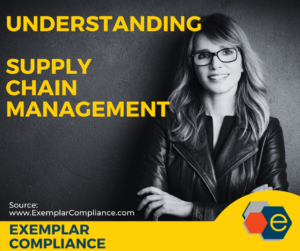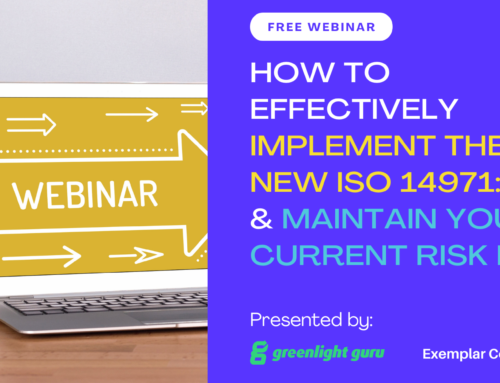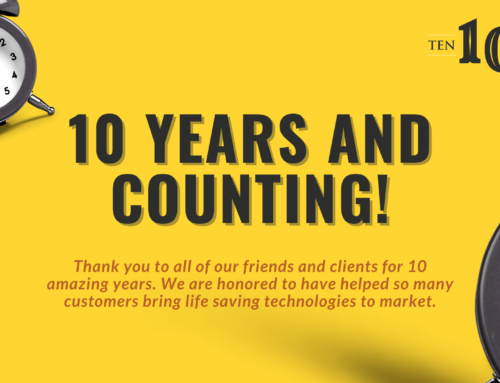Understanding Supply Chain Management
There is more to Supply Chain Management than you may initially realize. Supply Chain Management is a complex process involving not only the shipping and receiving of raw materials and finished products, but also trade agreements, customs, shipping logistics, warehousing and transportation. Understanding the basics of Supply Chain Management is important for everyone working in the Life Science industry. In this article we will discuss Supply Chain management and logistics as they apply to pharmaceutical products, medical devices, biologics, IVD products and combination products.
The goal of this post is to provide a high-level overview of the Supply Chain Management process including common mistakes to avoid and where to get expert support for your unique situation. If you have any questions about Supply Chain Management feel free to give us a call at (510) 316-5250. We will be happy to answer any questions you may have and offer some friendly advice.
Article Outline
- Choosing the Right Vendor
- Contractual Obligations
- Quality
- Open Communication
- Your Vendor’s Vendor
- Regulatory Authorities and Notified Bodies
- Social and Quality Norms in other Countries
- Product Quality
- Disruption in Supply
- Import Alerts and Customs
Choosing the Right Vendor
A new product is being developed and everyone is counting on you to secure the right materials and services. What do you do and how do you choose the right vendors? It is important to remember that this is a marriage, not speed dating. Companies that do not perform the proper due diligence up front end up plowing through vendors, never finding the right one and hopping from supplier to supplier. It is important to look at your vendor as someone you are entering a long-term relationship with – take time to get to know them. The two companies will be tied together contractually, socially, and financially. People often forget that changing a vendor is a very expensive endeavor and can result in product development changes, new validation runs, additional regulatory filings, tech transfer to new vendors… not to mention the entire process of requalifying a new vendor. The time and effort spent up front will more than pay for itself in the long run. If you are not sure about how to qualify a specific vendor, ask an expert for help.
Contractual Obligations
The vendor’s performance is only as good as the contract; and the contract is the most important tool in the vendor relationship. The contract is not a weapon to be waved at the other party. It is a tool to document a common understanding between the parties. It is an instrument for you to lay out all your expectations, and it is the perfect opportunity for a company to elaborate on critical items that are specific to their product. Larger companies are very good at creating large contracts that cover shipping terms, freight, and liability for damages, but they often overlook the product specific requirements that will be needed by the R&D or manufacturing teams.
Several years ago, the US FDA published a guidance on creating Supplier Quality Agreements, Contract Manufacturing Arrangements for Drugs: Quality Agreements, Guidance for Industry (November 2016). I highly recommend that you create a Supplier Quality Agreement in addition to the contract. The supplier quality agreement will go into detail concerning the roles and responsibilities between the parties, resolving disagreements, communication, giving notice, changes to the product, changes to the quality agreement, basic quality standards to be upheld and timelines for responses.
Review your contracts and Supplier Quality Agreement on a routine basis to make sure they are up to date and still meet the needs of your organization.
Quality
The quality standards of the two (or more) organizations should be aligned. The relationship will not be fruitful if one company holds a very high-quality standard and the other adheres to the bare minimum. The use of international standards (ISO, ICH, USP) are very helpful in establishing a baseline of quality. An initial supplier qualification is conducted to ensure that the supplier’s quality system and product meets the Company’s needs. Afterwards there is a periodic quality audit conducted to review records onsite, observe the quality system, and talk with the Supplier’s employees. Depending on the severity, non-conforming goods (or other quality related issues) may trigger a For Cause Supplier Audit by the Company. All records should be kept by the Company as GMP records. These should be stored securely and meet cGMP and Data Integrity standards (ALCOA).
Acronyms
ISO, International Organization for Standardization
ICH, International Council for Harmonisation
USP, U.S. Pharmacopeia
cGMP, Current Good Manufacturing Practice
ALCOA, Attributable, Legible, Contemporaneously recorded, Original or a true copy, and Accurate
Open Communication
Open communication between the company and the supplier is essential. To foster this communication, the companies should spell out the turnaround for communication between the companies. To one company a reasonable turnaround time is 30 days, to another it is 7 days. Avoid phrases like “as reasonable,” “as soon as possible” or “in the course of normal business.” These terms cause misunderstandings between the parties and misaligned expectations. The Supplier needs to know if there is an issue with the materials or services they provided. The company needs to know if there is a quality issue, nonconformance, or backstock issue. Both companies need to know if there is a pending regulatory inspection or issue that needs to be addressed. Any delays need to be communicated openly so that the other party may prepare accordingly.
Your Vendor’s Vendor
You have a wonderful contract in place, and you have defined the most elegant quality agreement ever seen, but what about that subcontractor? It is important to understand the subcontractors and vendors being used by your supplier. Some suppliers are hesitant to give this information (because of trade secrets or pricing) but it is essential that you know where critical parts and materials are being sourced from.
- Who is providing the API or Raw Materials to my Supplier?
- Where do the subassemblies come from?
- What outside laborites or central cell banks are in use?
- Are these companies certified? Do they have a quality system? How is the quality of the material being checked by the Supplier?
- Is there a possibility for a disruption in the supply chain from a subcontractor?
- Has my Supplier sourced multiple vendors or backup vendors for this material or service?
Go through the product or service being supplied to you & make sure you understand the critical parts. What influences or impacts these parts? Does Your supplier control these directly? Is your pricing and terms conditional on another vendor?
Regulatory Agencies and Notified Bodies
The manufacturer of record is responsible for all facets of the product. No matter how many suppliers participate in the assembly, testing, manufacture, packaging, labeling, and shipping of a product, the company that filed the product and has their name on the label is ultimately responsible. When the FDA comes to inspect your product or facility it is not enough to say, “Well, we didn’t make that subassembly.” The responsibility lies with the product license holder / manufacturer of record regardless of how many suppliers were used or what country the components were sourced from. Additionally, it is an extremely poor strategy to blame your supplier for an issue because the FDA will likely go and inspect their facility next, and you will still be accountable for any issues discovered. It is important to communicate openly with the supplier about any planned or unplanned inspections that are encountered. It is also important to share any filings or FDA inquiries regarding shared materials or services. The last thing you want is to find out there is an issue with your supplier by reading it on the FDA website… yikes!
Social Norms in Other Countries
It is extremely important to understand the social and cultural norms of suppliers in other countries before entering a supplier relationship. Things to consider include local minimum wage, working conditions, cleanliness and hygiene, and product storage and handling. In some countries it is acceptable for product to be stored in overflow shipping containers or pallets. Personal hygiene and handling of product can also differ vastly between regions. Your company may also consider the legal working age and the hiring of disadvantaged groups. It is recommended that product contracts, product specifications, and training documents be translated into the local language when necessary.
Product Quality
I cannot stress enough the importance of defining your product (or service) quality requirements. Take the time to detail the product specification, any required Standard Operating Procedures required by the Company, and any required training. The Use of international standards is also extremely helpful, for example:
- US Pharmacopeia (USP) grade materials
- Food grade vs medical grade (materials, lubricants, sealants, etc.)
- NIST traceable instruments
- ANSI
- Which cGMPs will be followed? (US, EU, Japan, China, Canada, Brazil, Australia, etc.)
Agree to the look and content of the Certificate of Conformance (CoC) or the Certificate of Analysis (CoA). Will this information be transmitted with the product or will it be sent electronically? Will you receive a CoC by manufacturing lot or box? Will the data be transferrable into your eQMS or Electronic System? Will the CoC be certified, signed and stamped? What are the acceptable tolerances and ranges for the data? Is there data regarding impurities or testing that are unique to this Company? It is recommended that both parties agree to a draft CoC before the shipment of any product. Have the draft CoC reviewed by the Company’s supplier quality, manufacturing and Quality Assurance groups.
Acronyms
NIST, National Institute of Standards and Technology
ANSI, American National Standards Institute
cGMPs, current Good Manufacturing Practices
eQMS, electronic Quality Management System
Disruption in Supply
Expect a disruption in your supply chain. The key to managing the product is to understand your supply chain from end to end, know the vulnerabilities, and manage expectations (and communications) accordingly.
- Is your supplied material made on demand?
- Is there a set manufacturing schedule for your material (e.g. is it made monthly, quarterly, etc.)? Is there a chance your material will be delayed due to a change in this schedule by a third party?
- Is your material always in stock?
- Is there any history of a backorder situation, and if so, what are the commitments around delivery and pricing?
- If your material is discontinued do you have an alternate Supplier? Have you pre-qualified them?
- Does your new supplier require a transfer of technology or know-how from the existing vendor?
- What freight forwarder / shipping company will be used and who is responsible for the safe transit of materials. Does the primary and secondary shipping process meet your requirements for cleanliness, cold storage, temperature tracking, etc.?
- If a batch fails to meet quality requirements how soon can a replacement batch be produced by the supplier?
Import Alerts and Customs
Suppliers sending products and materials to other regions must go through customs. It is important to make sure that there is a clear understanding of who is responsible for the movement of product. If you are responsible for the shipment of goods into the US, make sure that you have a freight forwarder who is proactive and will make sure you get timely updates when problems are encountered. If the supplier is responsible for this make sure that you have input into the shipping requirements and objectives. Make sure that all required documentation is checked for errors as Customs will reject a shipment when there are errors, however small, in these documents.
Familiarize yourself with electronic filing through ACE as this will simplify the process and help prevent problems before goods get into the US. Using a good customs broker will help you with this process. Also remember to familiarize yourself with imports and exports regulations with regards to your products. Many agencies have helpful guidelines to follow that will make this easier.
Make sure that all parties in the supply chain know the correct HTS code. Remember that the first 6 numbers are universal and the last 4 are country specific. Be sure to provide the correct code per country. More information on HTS codes can be found here. It is definitely helpful to study any trade agreements between the countries in your supply chain as this can save your company money in customs duties and other costs.
Acronyms
ACE, Automated Commercial Environment
HTS, Harmonized Tariff Schedule
Need More Information?
For more information about Supply Chain Management contact us at (510) 316-5250 or send us an email at Info@ExemplarCompliance.com. Exemplar Compliance is a full service consulting firm specializing in Quality and Regulatory Compliance. We provide a range of services including Project Management, Quality System Implementation, FDA Readiness, Product Launch, Quality Audits, Computer System Implementation, and Supply Chain Management.







